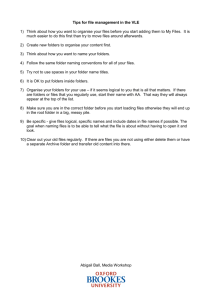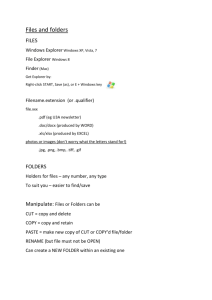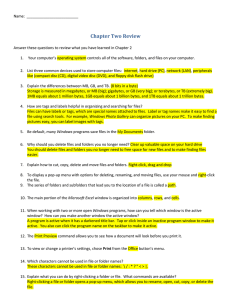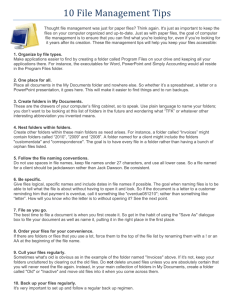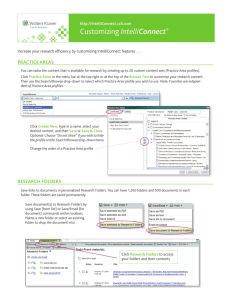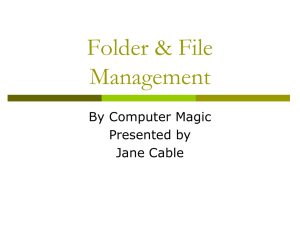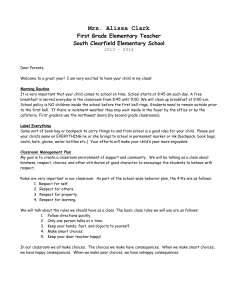Organising files: developing an electronic filing system
advertisement
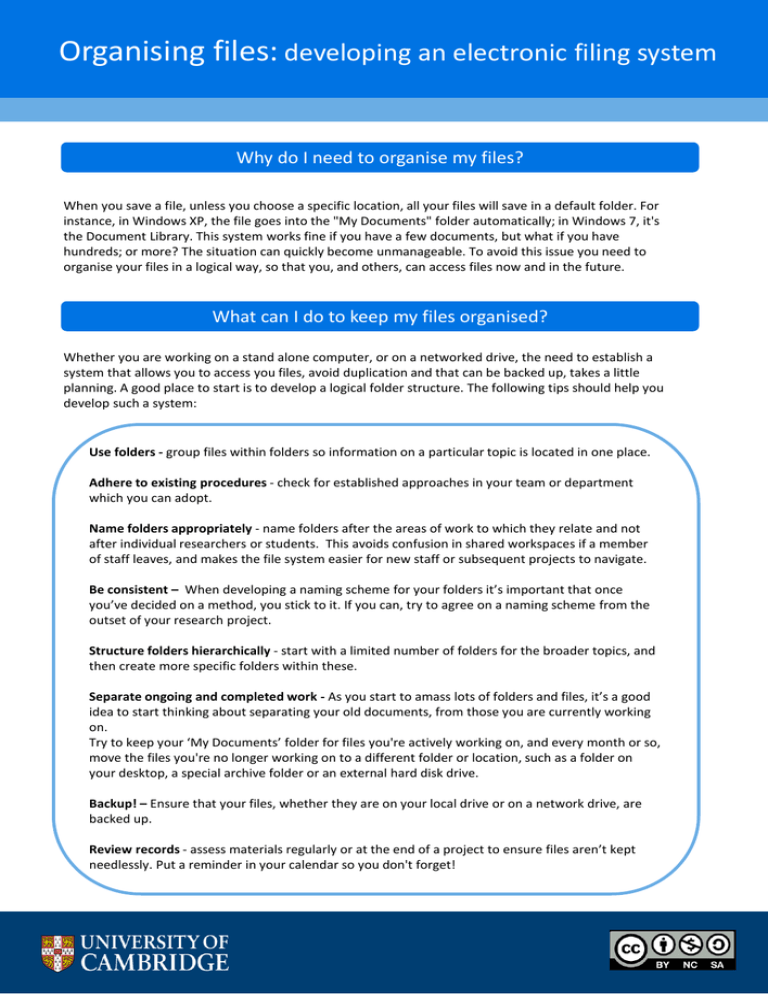
Organising files: developing an electronic filing system Why do I need to organise my files? When you save a file, unless you choose a specific location, all your files will save in a default folder. For instance, in Windows XP, the file goes into the "My Documents" folder automatically; in Windows 7, it's the Document Library. This system works fine if you have a few documents, but what if you have hundreds; or more? The situation can quickly become unmanageable. To avoid this issue you need to organise your files in a logical way, so that you, and others, can access files now and in the future. What can I do to keep my files organised? Whether you are working on a stand alone computer, or on a networked drive, the need to establish a system that allows you to access you files, avoid duplication and that can be backed up, takes a little planning. A good place to start is to develop a logical folder structure. The following tips should help you develop such a system: Use folders - group files within folders so information on a particular topic is located in one place. Adhere to existing procedures - check for established approaches in your team or department which you can adopt. Name folders appropriately - name folders after the areas of work to which they relate and not after individual researchers or students. This avoids confusion in shared workspaces if a member of staff leaves, and makes the file system easier for new staff or subsequent projects to navigate. Be consistent – When developing a naming scheme for your folders it’s important that once you’ve decided on a method, you stick to it. If you can, try to agree on a naming scheme from the outset of your research project. Structure folders hierarchically - start with a limited number of folders for the broader topics, and then create more specific folders within these. Separate ongoing and completed work - As you start to amass lots of folders and files, it’s a good idea to start thinking about separating your old documents, from those you are currently working on. Try to keep your ‘My Documents’ folder for files you're actively working on, and every month or so, move the files you're no longer working on to a different folder or location, such as a folder on your desktop, a special archive folder or an external hard disk drive. Backup! – Ensure that your files, whether they are on your local drive or on a network drive, are backed up. Review records - assess materials regularly or at the end of a project to ensure files aren’t kept needlessly. Put a reminder in your calendar so you don't forget!
